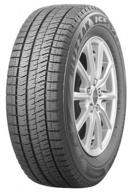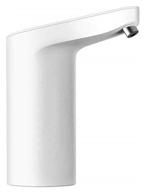
Review on Discover the Power of Frizzlife Reverse Osmosis Filtration System: Clean, Crisp Water at Your Fingertips! by Lagant Wardrick

All of these underflush reverse osmosis systems have one major problem and it's a bit of a scam.
There's a big problem with these reverse osmosis systems, a dirty little secret that nobody seems to be discussing. I knew something was wrong when we realized that our filter water kettle was heavily scaled. To determine what was going on, I bought and installed a TDS-HM digital meter with two built-in sensors to check the water quality at the reverse osmosis outlet and at the remineralization filter outlet. What I found was a shock. Basically, if the system is not used for a while, the water in the reverse osmosis filter will become contaminated as the waste water will flow through the membrane in the wrong direction. Second, when water enters the remineralizing filter, which in this case has a large volume, it is heavily mineralized. It messes up the taste and quite frankly defeats the whole reason for using a reverse osmosis system in the first place. It's like these under-sink systems were made just to make you feel good about drinking poor-quality water. It's like a placebo. For the system to function optimally, stagnant water in the system must be flushed down the drain before each use. This seems terribly inefficient and the system is not working on demand as a result. In my case, the flushing took about 80 seconds for the TDS to reach the optimal level. My tap water had a TDS of about 480 ppm. After filtering through an activated carbon filter and a reverse osmosis membrane, the result was about 8 parts per million. It's about 98.4% dissolved solids filtration, which seems pretty good. After the water passed through the remineralizing filter, its TDS was around 20 ppm. Alkalinity has been restored and several minerals have been added to make the water drinkable. This also seems to be a good result. But without flushing, the TDS output of the reverse osmosis filter sometimes reaches 250ppm in the first few seconds. And that water hits the remineralizing filter and collects a bunch of solids there, causing it to go up to 300ppm for at least a few seconds. Again, it takes about 80 seconds to normalize and flush out contaminated, stagnant water. It's almost as bad as drinking water straight from the tap. The same problem is likely to affect single reservoir systems. The water already in the tank is regularly contaminated by unclean standing water from the reverse osmosis filter. This is a fatal flaw of these household reverse osmosis membranes and remineralization filters. The bottom line is that if you want high quality filtered water, you should flush the system for about 80 seconds BEFORE EACH USE. It would be better to filter the water into the secondary storage tank once a day after starting the rinse cycle and use it from the tank during the day.
- Great for me
- No instructions
New products
Comments (0)
Top products in 💧 Water Purification
Another interesting products
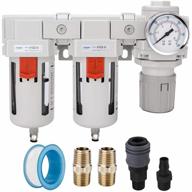
NANPU 1/2" NPT Air Drying System - 5 Micron Particulate Filter, 0.01 Micron Coalescing Filter, Air Pressure Regulator Combo - Semi-Auto Drain, Poly Bowl W/Metal Gauge

23 Review
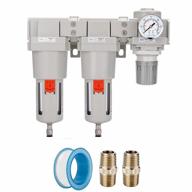
NANPU Air Drying System With Double Filters And Pressure Regulator Combo For Clean And Controlled Air Supply

18 Review
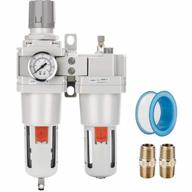
NANPU 1 FRL Air Filter Regulator Lubricator Combo With 0-150 Psi Gauge, 5 Micron Brass Element, Poly Bowl & Semi-Auto Drain - Metal Bracket Included

20 Review
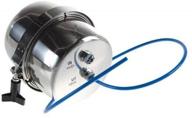
Filter under the sink Aquaphor Favorit ECO silver

20 Review




